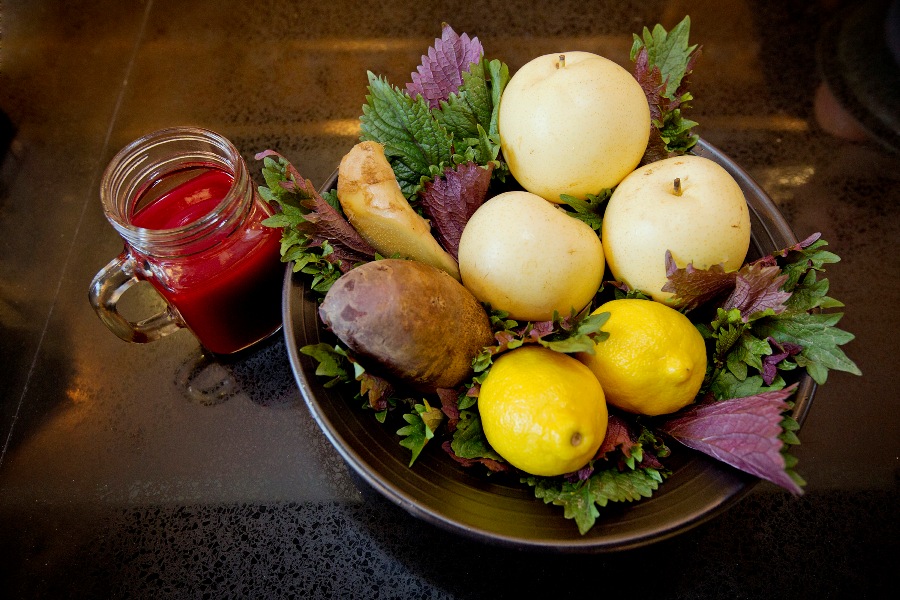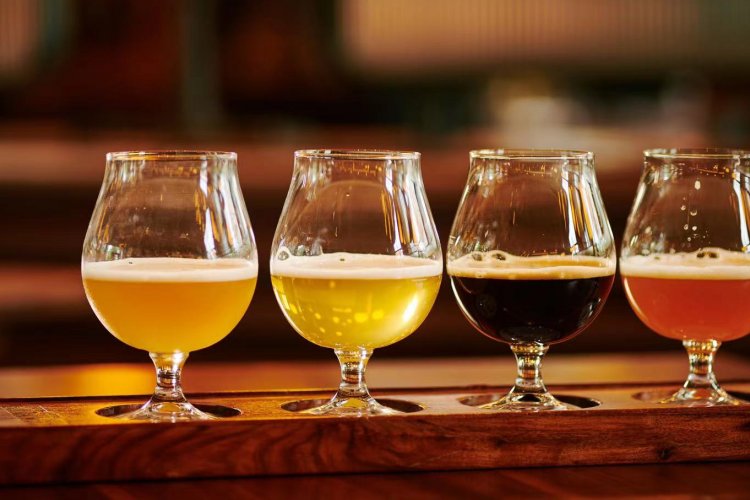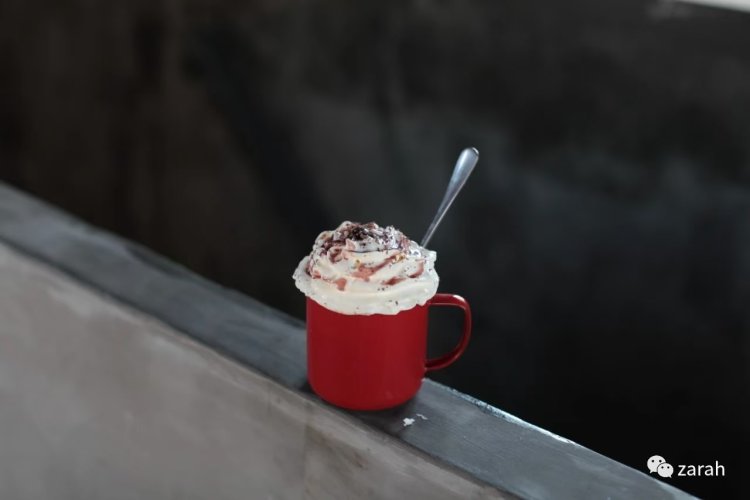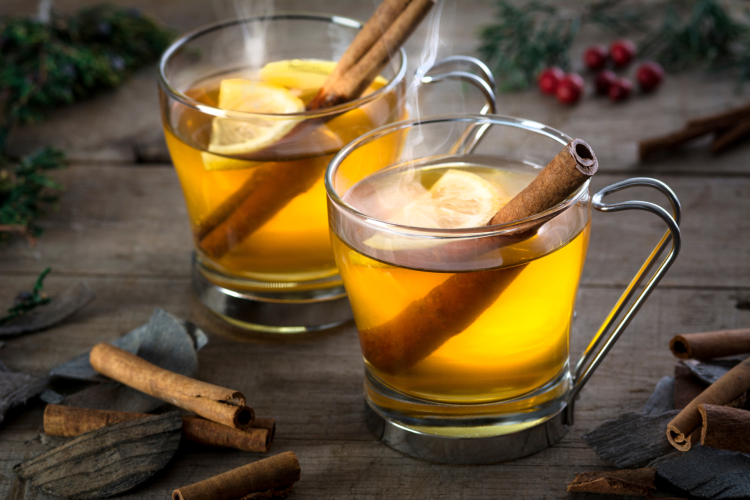Healthy Hack: Pairing Nutrient Rich Foods and Drinks to Give Your Body a Boost
 This blog series is sponsored by Tribe Organic Restaurant, Beijing's newest option for fresh, healthy, organic and vegetarian-friendly dining.
This blog series is sponsored by Tribe Organic Restaurant, Beijing's newest option for fresh, healthy, organic and vegetarian-friendly dining.
The chef removes the lemon’s skin, but not with a fancy, precise peeler. Instead, he just uses a simple knife and – after cutting off the lemon’s tips so that it has flat edges to sit lengthways – he chops that yellowy outer layer off in chunks. One might expect him to carefully remove every flake of white pith, so that only the fruit’s glistening, citrusy meat remains. But that’s far from the case – in fact, he says the pith is the most important part.
“It may be bitter, but the pith also has a lot of goodness that outweighs the flavor,” Brandon Trowbridge, the chef at Tribe restaurant, says of his policy to never peel too much of the skin or pith from fruits and veggies, because those outer layers have more exposure to the sun and, therefore, hold more vitamins and nutrients.

His is a practical, economic outlook on nutrition that aims to minimize waste and maximize efficiency, so that one’s body can make the most of its food. For Trowbridge, these healthy methods help eaters reach their nutritional potential.
That philosophy is the thrust behind today’s nutrient density beverages, which eschew empty calories and complement one’s food intake so that the body can better absorb the nutrients in those dishes.
“I used to just pair drinks with dishes so that their flavors would complement each other. But the more I thought about it, the more it became clear that it’s just as easy to make sure the two also complement each other on a nutritional level,” Trowbridge says, before elaborating: “If you have a beverage with a lot of vitamin C, for example, it will help you extract more iron your greens. But in order for it to work, you have to practically ingest them both at the same time. So that’s why having one as a dish and one as a drink works so well ... Pairing foods together can either complement each other increasing the body's ability to absorb nutrients or cause the body to completely block them all together. One of my favorite ways to increase the absorption of nutrients is by pairing food with a juice that will increase the positive benefits of the meal being consumed.”
To maximize the absorption of nutrients when pairing a drink with a meal, Trowbridge follows a few combination rules:
~ Omega 3 (found in mackerel, chia seed, red shiso) combined with polyphenols (found in berries, beets, chocolate) can help protect from heart disease and fight cancer;
~ Iron (found in kale, spinach, red meat) and Vitamin C (found in mangos, lemons, red bell peppers) can help boost energy and oxygen absorption;
~ Calcium (found in almonds, shiso and yogurt) combined with Vitamin D (found in mackerel, eggs and almonds) give you strong bones, controls blood pressure and maintains a healthy PH (acidity) balance in your system;
~ Carotene (found in pumpkin, carrot, kale) and Vitamin E (rosemary, mango and kale) can help protect you from LDL (low-density lipoprotein) cholesterol, which can clog up your arteries.
That was Trowbridge’s aim as he blended both of today’s drinks – a deeply purple tinged pear juice with Japanese red shiso, and an emerald green apple juice with rosemary.
The first drink’s Japanese red shiso (a leaf that’s also known as perilla, which is commonly served with sushi) is rife with vitamin C and calcium. Lemon is also brimming with vitamin C. Meanwhile, the apple juice’s rosemary leafs provide a generous heaping of antioxidants, and the kale in its recipe is loaded with vitamins A and C, along with calcium, iron, and potassium.
While the juices are great on their own, you may benefit even more by drinking the red shiso while eating mackerel or salmon for a heart healthy meal, or eating a handful of almonds with the drink as a bone strengthening snack. You can drink the rosemary juice with a green salad for a sure way to get your full dose of iron, or with a pumpkin dish to get a well rounded dosage of carotene.
Trwbridge says that the recipes listed below will each produce two glasses of juice, which would ideally be enough for two people. He cautions users not to drink too much, because such beverages are high in sugar.
For more tips about how to best ready these bevies, see the instructions below.
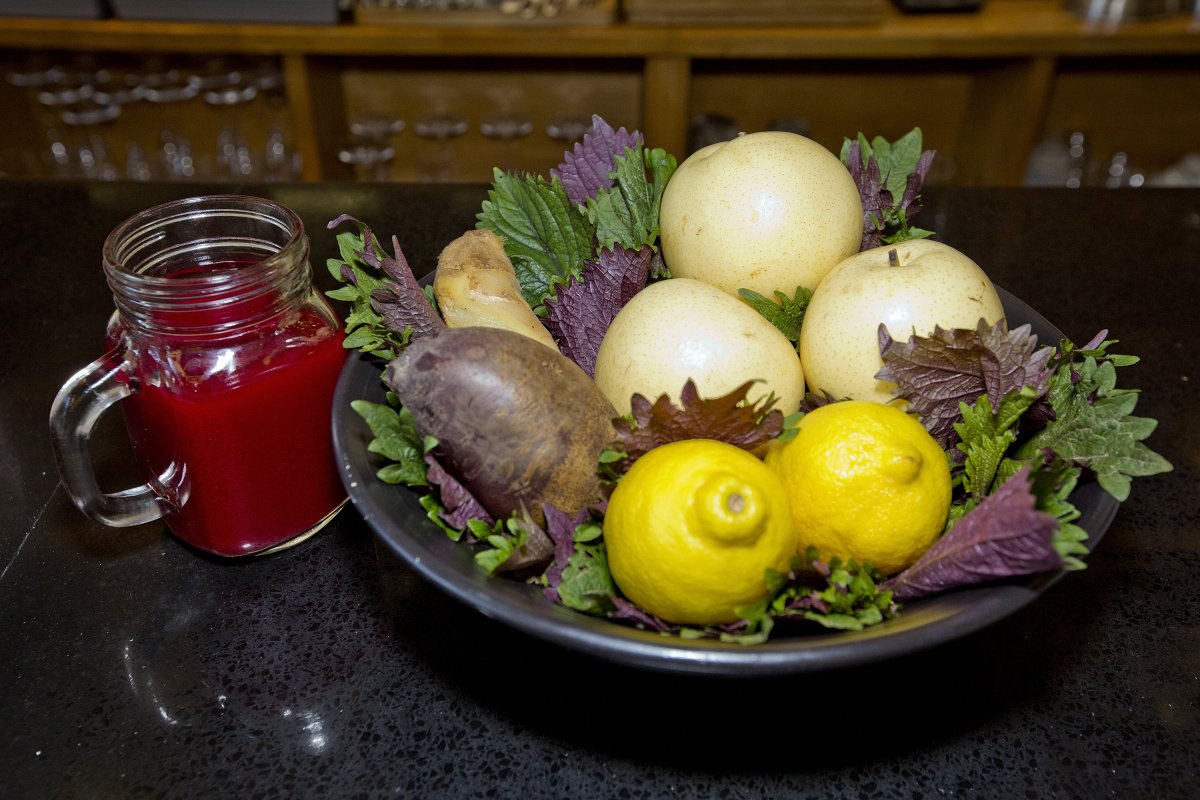
Ingredients:
A: For the pear juice with Japanese red shiso
150g red shiso (aka perilla)
1050g pears
90g lemon
22.5g ginger
250g beet
B: For the apple with rosemary juice
700g apple
500g kale
100g lemon
20 rosemary leaves
Instructions:

A: For the pear juice with Japanese red shiso
1. Cut the tips off both ends of a lemon.
2. Cut the skin off the lemon, leaving as much of the white pith on the fruit as possible.
3. Cut the lemon into fine chunks and blend with your juicer/blender.
4. Chop the pear into the finest slices possible.
5. Place pear slices in the juicer, and blend/juice.
6. Peel the ginger with a spoon, removing as little of the outer layer as possible.
7. Cut the ginger in fine chunks and place in the juicer and blend/juice.
8. Blend the shiso leaves.
9. Peel, cut and juice the beet.
10. Pour and enjoy.
B: For the apple with rosemary juice
1. Cut the tips off both ends of a lemon.
2. Cut the skin off the lemon, leaving as much of the white pith on the fruit as possible.
3. Cut the lemon into fine chunks and blend with your juicer/blender.
4. Chop the apple into the finest slices possible.
5. Place apple slices in the juicer.
6. Strip the rosemary leaves from their stems, then blend.
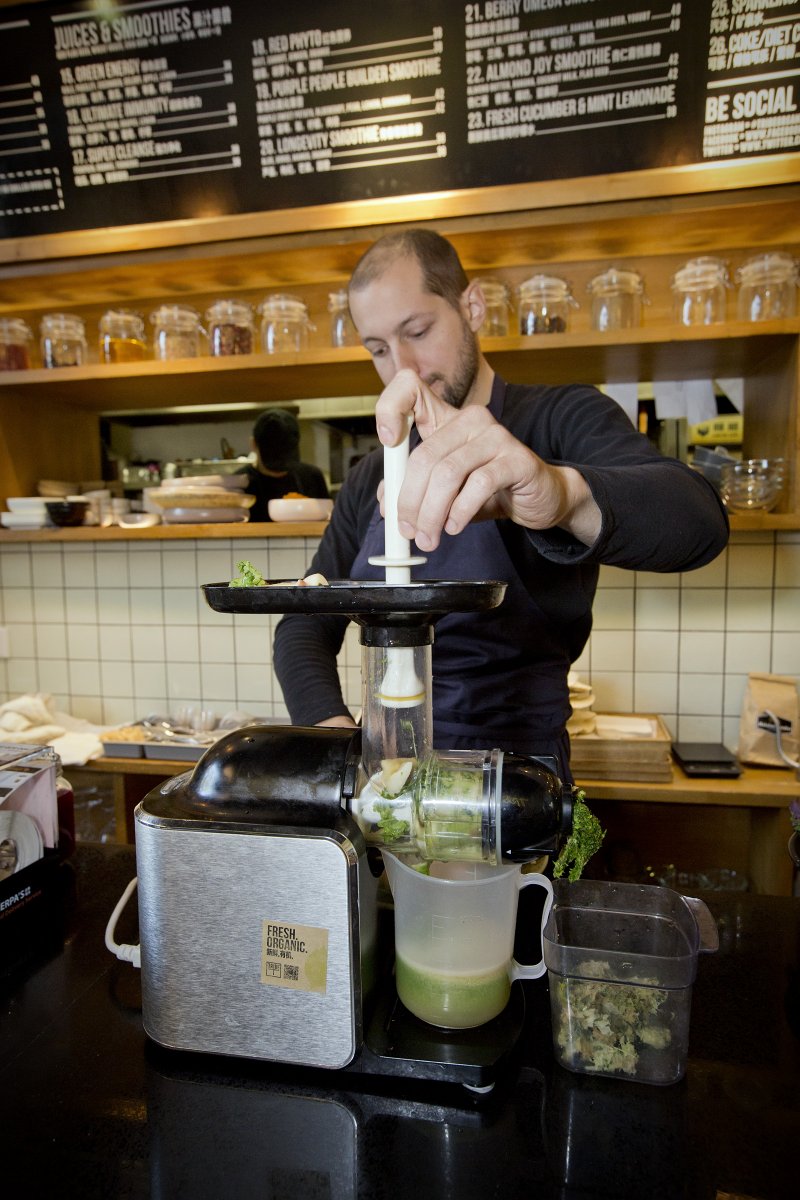
7. Blend the kale.
8. Pour and enjoy.
*Note: Both recipes will produce two glasses of juice, which should be eaten with a salad to augment the nutrients of both. The chef recommends sharing a glass with a friend, although drinking two glasses is not harmful. Any more than two glasses will be unhealthy though, because juice is high in sugar.
Added tip: The leftover pulp does not need to be thrown away. Tribe’s carrot cakes are made from the pulp of carrot juice. Trowbridge says the steps of a carrot cake recipe can be used for most fruit and vegetable pulps leftover from juicers to make a guilt-free treat.
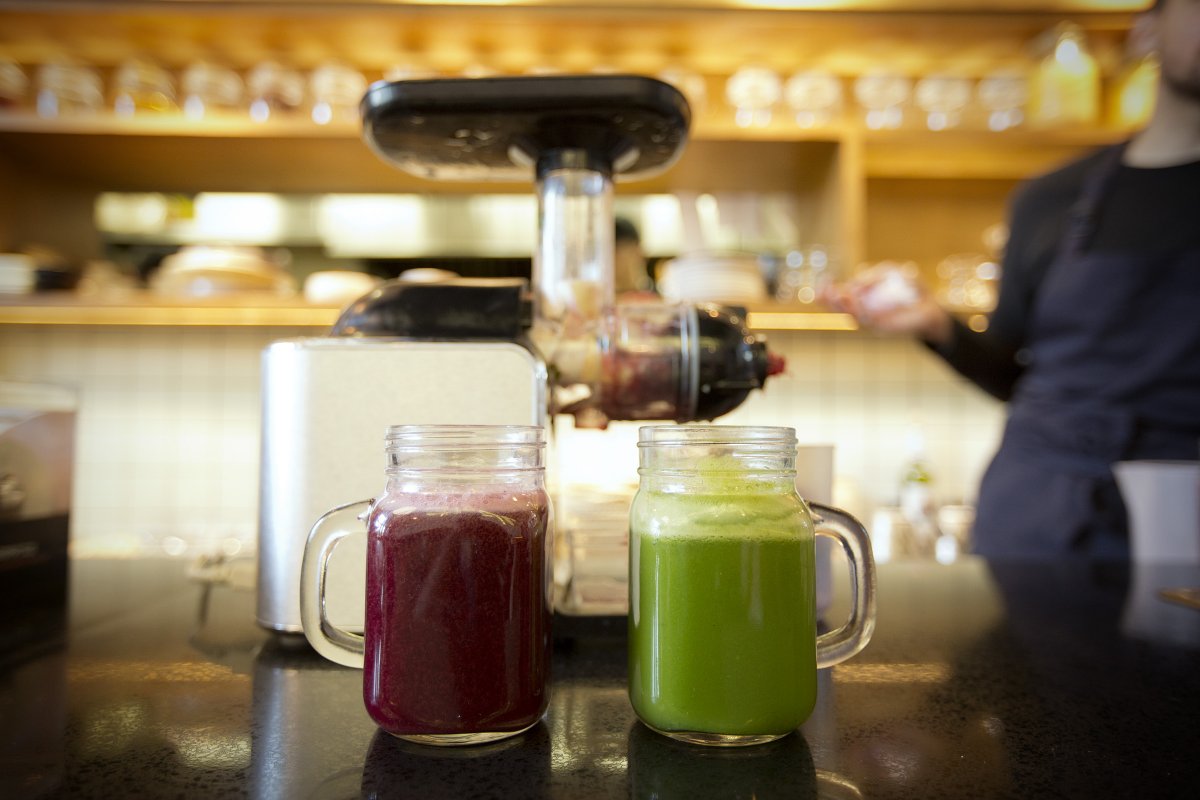
Click here to find out how to make cold pressed coffee, learn about kombucha here and check out how to create cold and flu-fighting warm winter drinks here.
About the author: A ravenous foodie and frequent tbj contributor, Kyle Mullin has been working as a freelance reporter in Beijing since 2011.
Photos: Uni You
Editor's Note: This post has been amended from an earlier version which was written and edited with an incorrect emphasis on detoxification.

